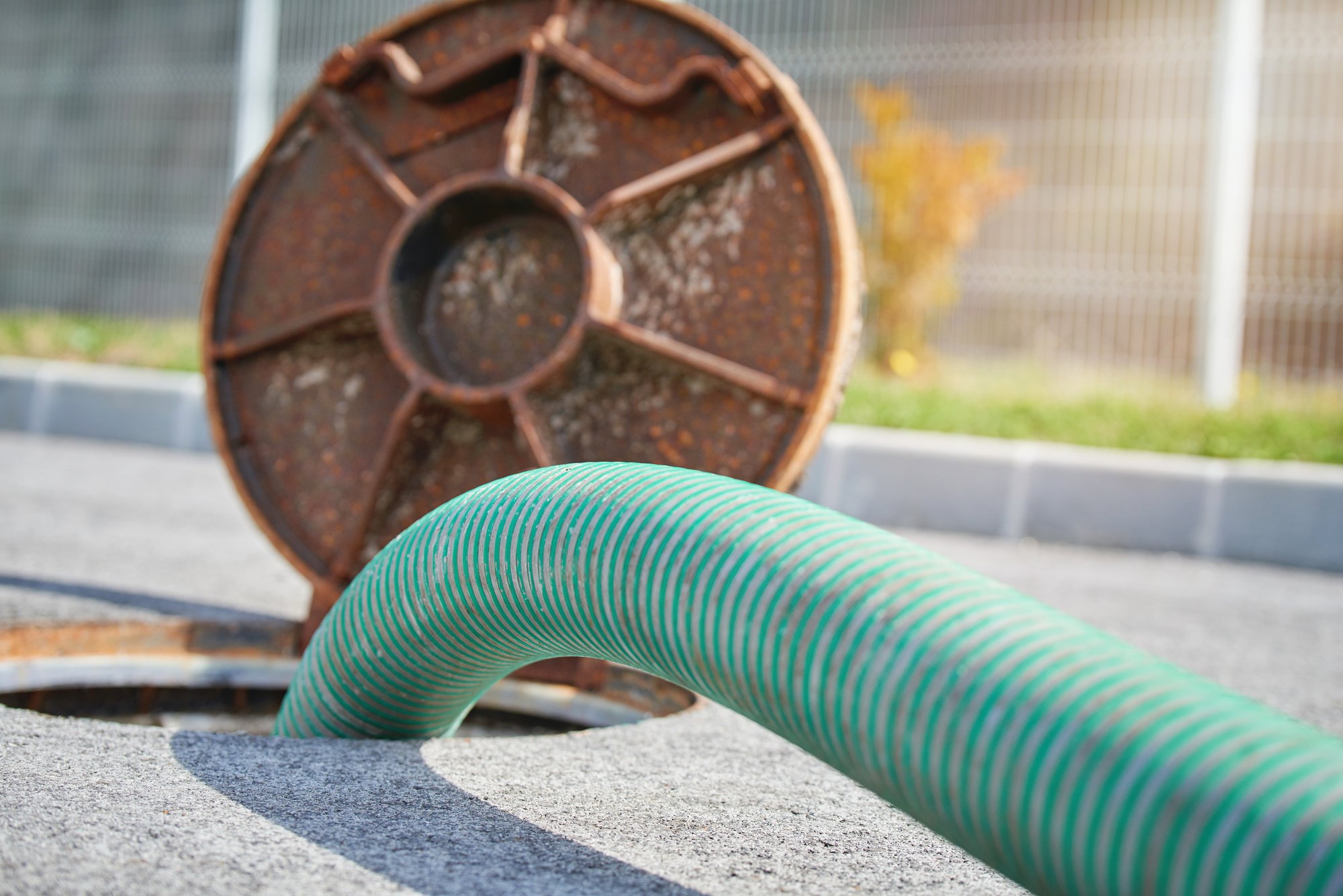If your home is among the five per cent of UK homes too remote to connect to the mains sewer system, you will need to invest in your own sewage treatment facility.
There are a number of options available, including cesspools and septic tanks, but sewage treatment plants are the preferred option for most homes, farms and businesses.
Sewage treatment plants, also known as package treatment plants, work by creating an environment which encourages bacteria to grow and break down the sewage.
Sewage treatment plants are clean and eco-friendly and may be your only choice if you plan to discharge wastewater into a ditch or stream. As the waste leaves the final chamber of the sewage treatment plant to be discharged into the environment, it can be as much as 95% clean, posing no threat to the environment.
Depending on the size, a single sewage treatment plant can treat the waste of several homes or commercial premises.
Sewage treatment plants generally require a power source, because the majority of them work by pumping in compressed air or by rotating discs. This doesn’t require a large electricity supply and sometimes takes only the same amount of power as a 60 watt lightbulb.
Sewage Treatment Plant Installation
- Tank Inspection: Thoroughly inspect the tank for any signs of damage.
- Invert Depths Check: Verify that the invert depths are accurate and aligned correctly.
- Tank Siting: Choose an appropriate location for placing the sewage treatment tank.
- Hole Excavation: Dig a hole in the chosen location to accommodate the tank securely.
- Drainage Consideration: Take into account the required drainage falls for optimal functioning.
- Tank Placement: Carefully position the sewage treatment tank within the excavated hole.
- Proper Backfilling: Use the appropriate backfill material to ensure stability around the tank.
- Inlet and Outlet Installation: Install the inlet and outlet connections for the sewage treatment system.
Before you go ahead and install a sewage treatment plant for your home or business, what do you need to consider?

1. Know the law
The General Binding Rules regulate small sewage discharges and apply to anyone who operates a septic tank or small sewage treatment plant in England. Anyone that operates or plans to install a septic tank or small sewage treatment plant must follow the rules as a minimum. Once you comply with the General Binding Rules, you do not require a permit.
There are different rules relating to sewage treatment plants, depending on whether you are in England, Scotland, Wales or Northern Ireland.
There are some situations in which you need to apply for a Consent to Discharge from the Environment Agency – this is a licence which says that your wastewater is clean enough not to damage local wildlife.
You won’t need to apply for one if you’re discharging less than 5,000 litres per day to surface water
But you must apply for a permit:
- If you discharge to a well, borehole or other deep structure.
- If you discharge more than 2 cubic metres (2,000 litres) per day to the ground.
- Where the tank is within an Environment Agency groundwater protection (SPZ) zone 1 (find out more at www.environment-agency.gov.uk).
If you are in any doubt as to whether you need a permit, check the government’s website: Septic tanks and treatment plants: permits and general binding rules: The general binding rules - GOV.UK (www.gov.uk)
2. Do your homework
You want your sewage treatment plant to work for your home and your family, and you want it to last for a long time. So spend some time online researching the options available. Look at their benefits and their faults in relation to the job you need them to do. Make sure you are armed with all of the facts, and listen to advice from the supplier, to help you make the right decision.
Before ordering your sewage treatment plant, a detailed site survey needs to be carried out, which will give you essential information about the type of wastewater treated, input loadings, effluent output quality, proximity to properties, discharge point and site access.
A percolation test should be conducted if the effluent is being discharged to the ground. This is done to find out whether the ground is suitable to receive the effluent. If the discharge is to water, such as a river, stream or lake, you will find the guidelines in the General Binding Rules.
3. Think about the size
Before you go ahead and order your sewage treatment plant, think about what size you will need. You need to consider the size of your property and the number of people who will be staying there. Don’t just think about the number of people who are living there now, think about the potential occupancy in the future eg a three bedroom house could be home to five people.
4. Pumped or gravity?
A sewage treatment plant can have a pumped or gravity flow. A pumped flow is essential if the tank’s outlet point is lower than the soakaway or watercourse the water is discharging to.
A pumped feed will require electrical equipment, which will push up the running costs.
A sewage treatment plant fed by gravity will give a more gradual input. This is preferable for some treatment plants, which aren’t designed to cope with the rate and volume of water delivered by a pump. If you have the option, putting the sewage treatment plant downhill from your house means that gravity will help the wastewater along.

5. Get your facts right
Before you go order your sewage treatment plant, you need to know a few important facts:
- The depth of your drainage pipes – the depth of your incoming pipework should be matched to the treatment plant.
- The depth of the outfall from the treatment plant.
- How deep you will need to dig to install your treatment plant – if you dig down and find water, this could create additional problems.
If you don’t know the answer to these questions, or how to find out the answer, make sure you get advice. You don’t want to make a mistake and install the wrong thing. A supplier will be able to make sure you get the right product for your needs.
6.Where to place your sewage treatment plant?
There are a few things to consider when deciding where to install your sewage treatment plant.
Your sewage treatment plant must be at least three metres away from the property boundary, as well as any trees or vegetation with significant root systems. Where possible, many local authorities will insist on a minimum distance of 15 metres away from any habitable building. The discharge point (outlet) must be a minimum of five metres away from any building.
7. Can a lorry get close to the tank?
When siting the plant, bear in mind that it will require routine maintenance. It will need emptying regularly, probably once a year. So it should be placed within 30 metres of a hardstanding suitable for a vacuum tanker, or the lorry won’t be able to get close enough.
8. Leave it to the experts!
Installing a sewage treatment plant isn’t a DIY job. There is a lot to consider and risks to both yourself and the environment if you make a mistake, so it is a job that should be left to the experts. Considerations include the type of soil you have, the length of the pipework and the depth of the hole. You will need to employ a groundwork contractor to dig the hole and an electrician to connect your sewage treatment plant to the power supply.
It is also worth bearing in mind that you risk losing your warranty if you don’t follow the installation and operation guidelines provided by the manufacturer of the sewage system.
9. Be careful what you flush
Once your sewage treatment plant is installed, it might feel like all the hard work is done, but you have to be careful about what you flush and rinse away. Sewage treatment works are designed to deal with the water from your shower, sinks, bath, toilet, washing machine and dishwasher, plus the waste products you would expect to find from them!
They are not designed to deal with baby wipes or sanitary towels. They are also not designed for food washed down your sink, which is harder for the system to break down.
Be careful too about excessive use of cleaning products, particularly antibacterial cleaners, which could kill off the very bacteria that are making the system work. Try to spread your laundry out throughout the week to avoid too many chemicals and too much water hitting the system in one go through multiple loads of washing in one day.
It’s also important to prevent rainwater getting into your sewage treatment plant as it could flush out the helpful bacteria and flood the system.
10. Don’t forget maintenance!
Maintenance of a sewage treatment plant is essential and must be undertaken by someone who is competent. Do not attempt to do it yourself, unless you are a trained and certified maintenance technician/ engineer. If you do, you risk losing your warranty and breaking the General Binding Rules for Small Sewage Discharges.
Even though the water from a sewage treatment plant is discharged, there will be a quantity of sludge left behind. This should be emptied once a year by an authorised person who has passed the British Water Maintenance and Servicing Training Scheme. Some low budget treatment plants may require emptying more often.
These tips should serve as a useful introduction to installing a sewage treatment plant on your property. Buying and installing a sewage treatment plant is a big financial commitment, while installing it incorrectly could lead to environmental problems. So it is essential that you follow all of the relevant advice you need and use properly qualified contractors to ensure that you get it right.



